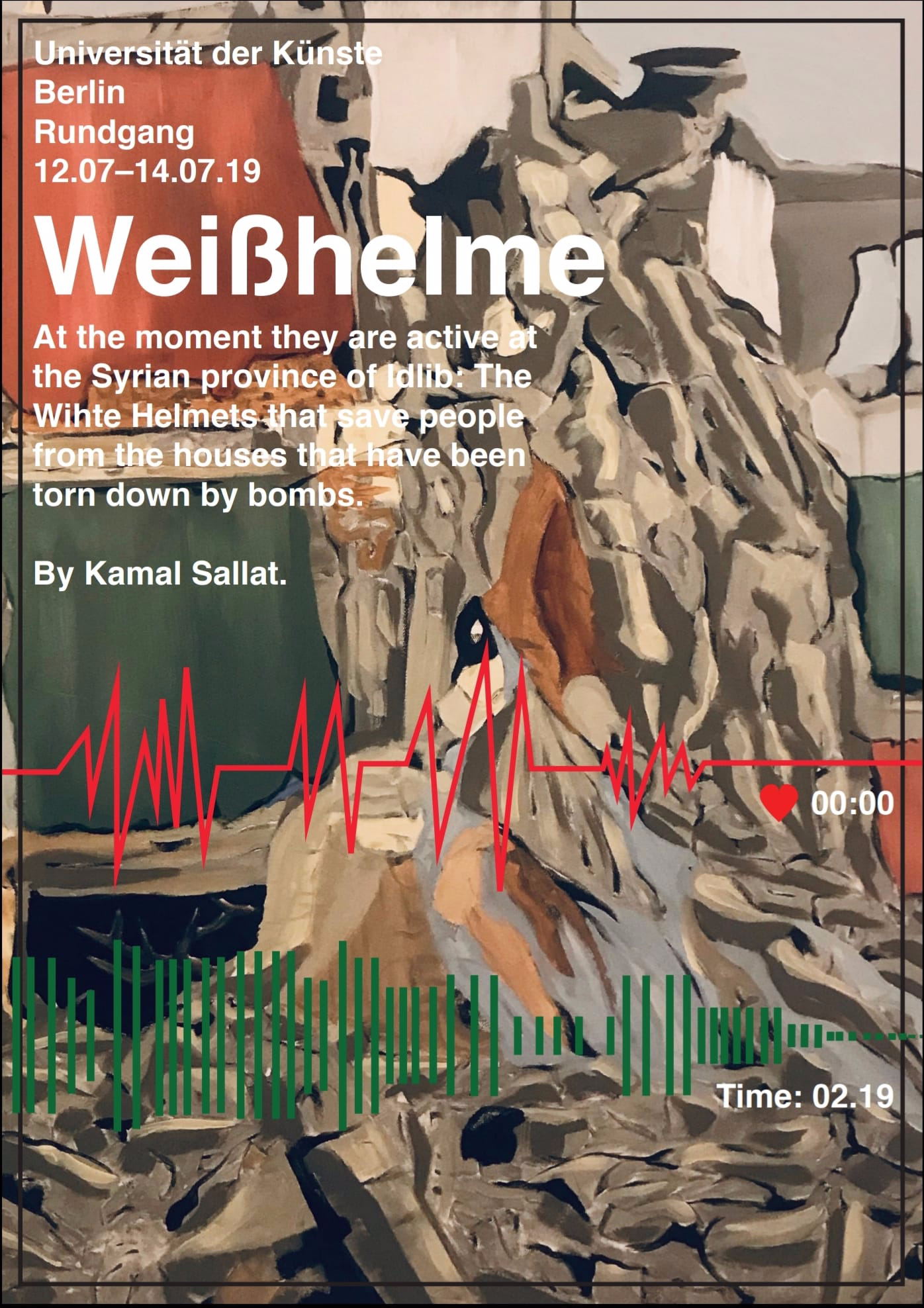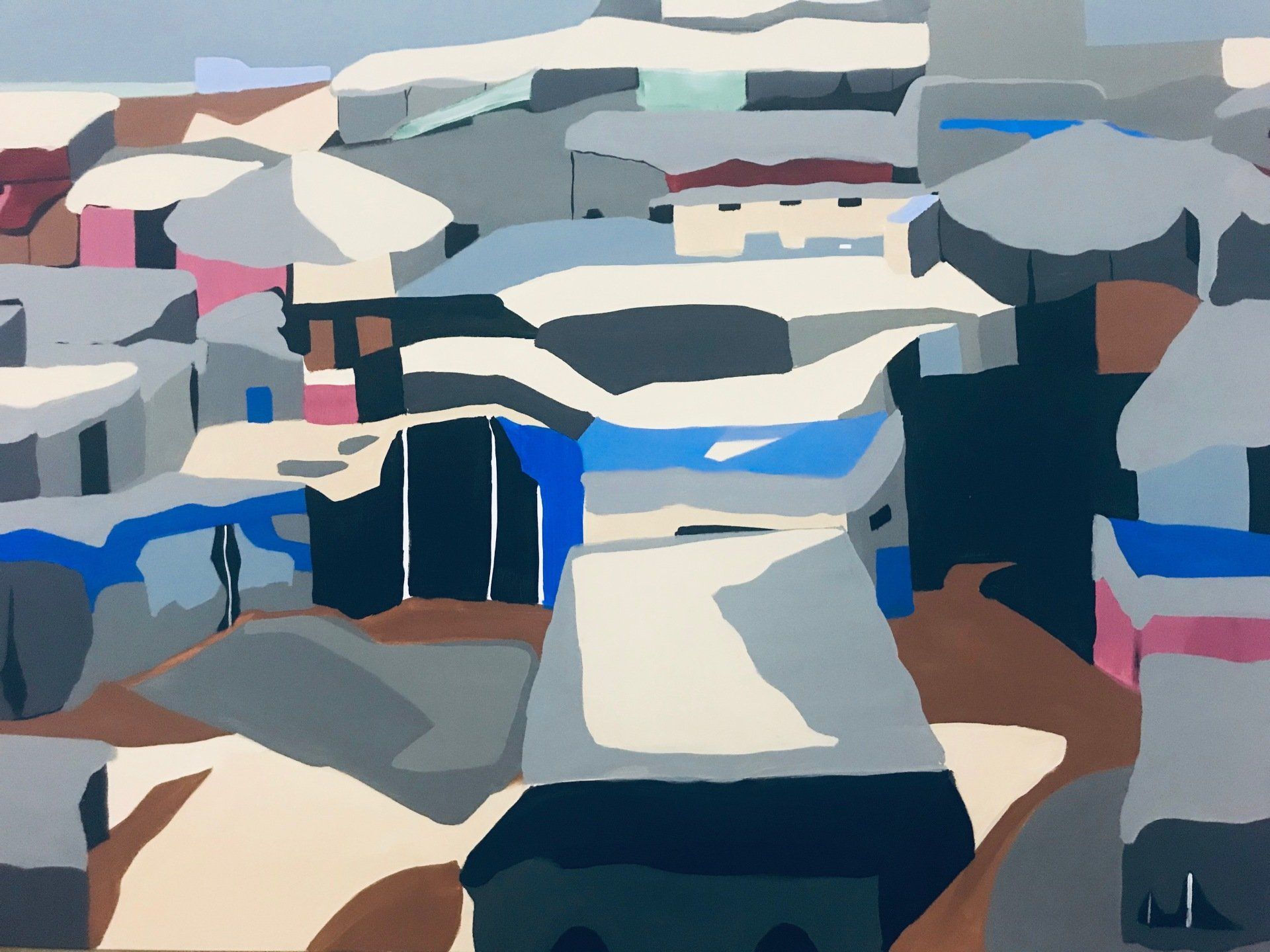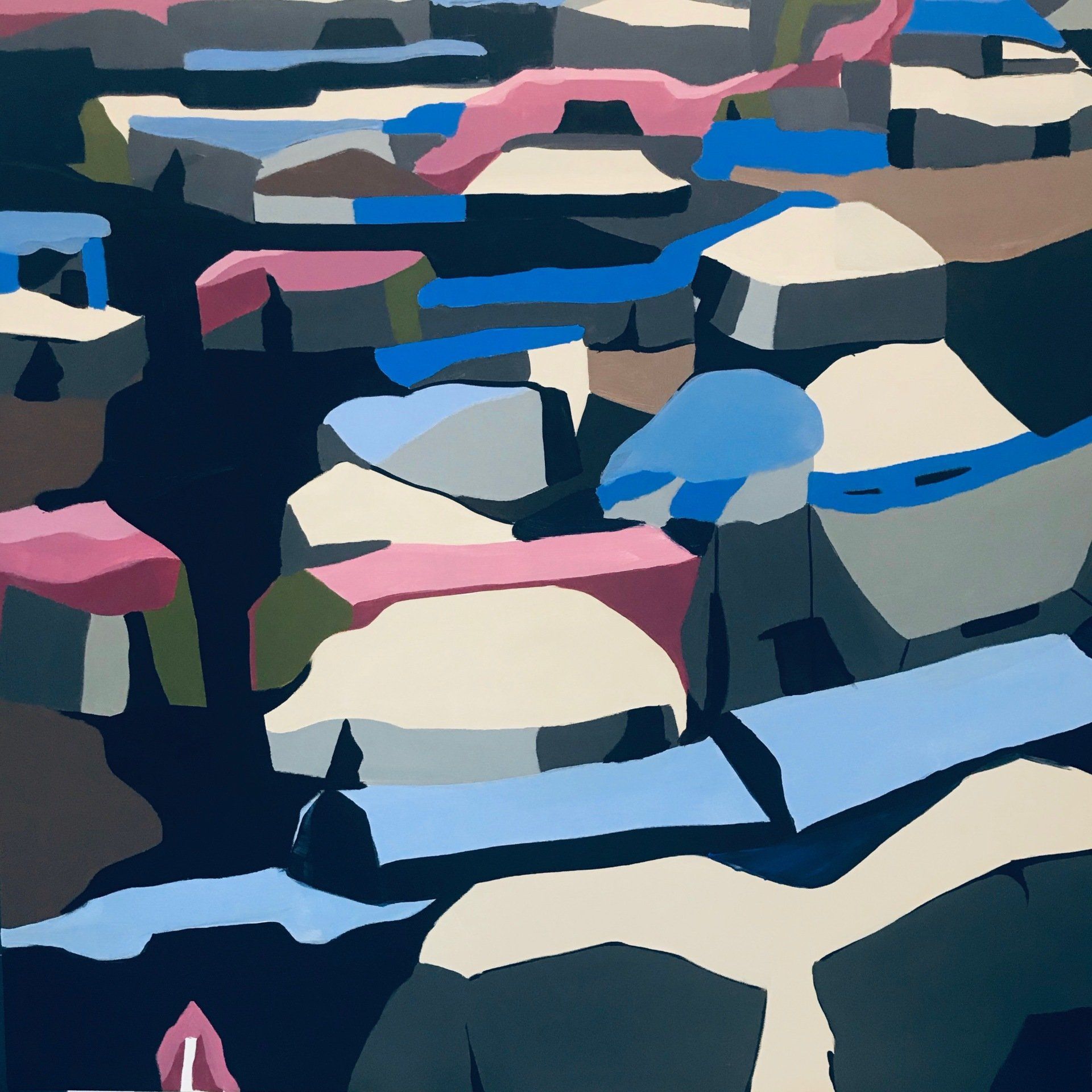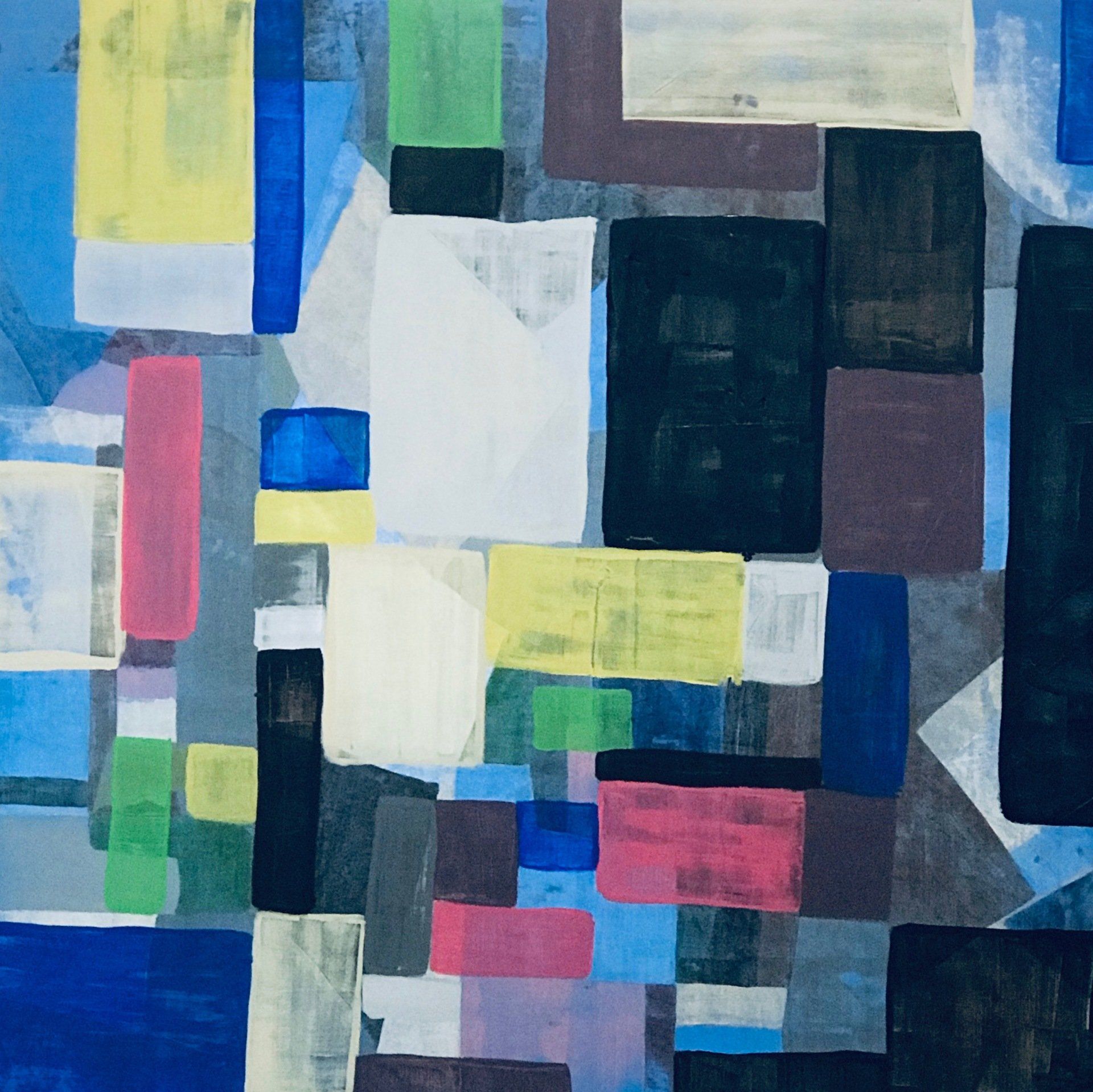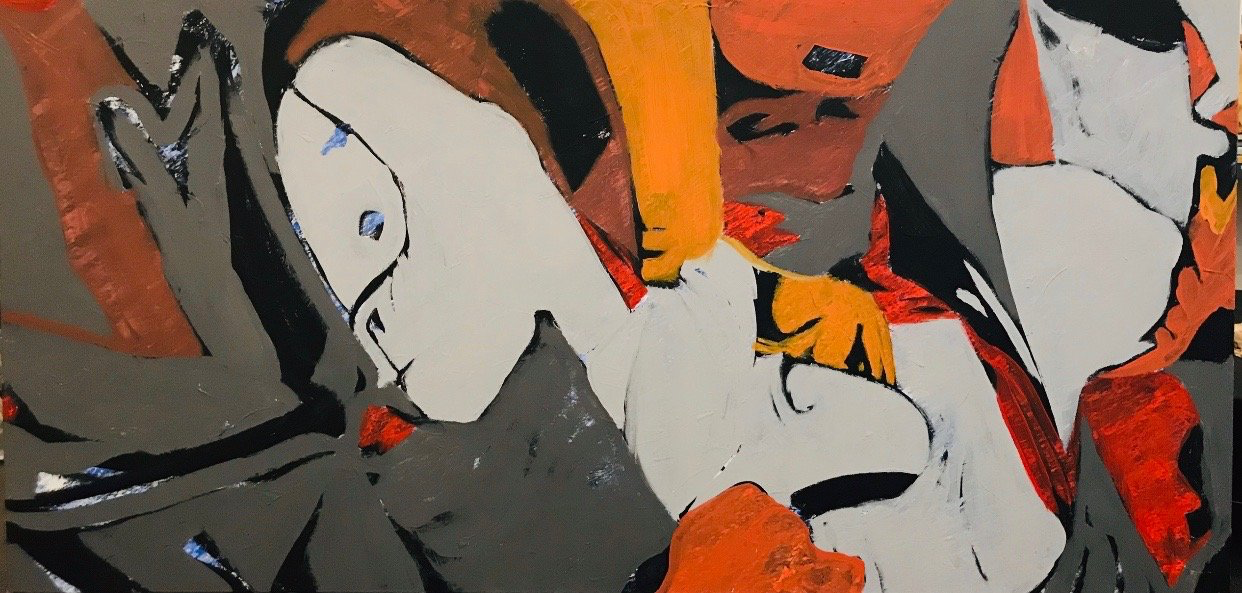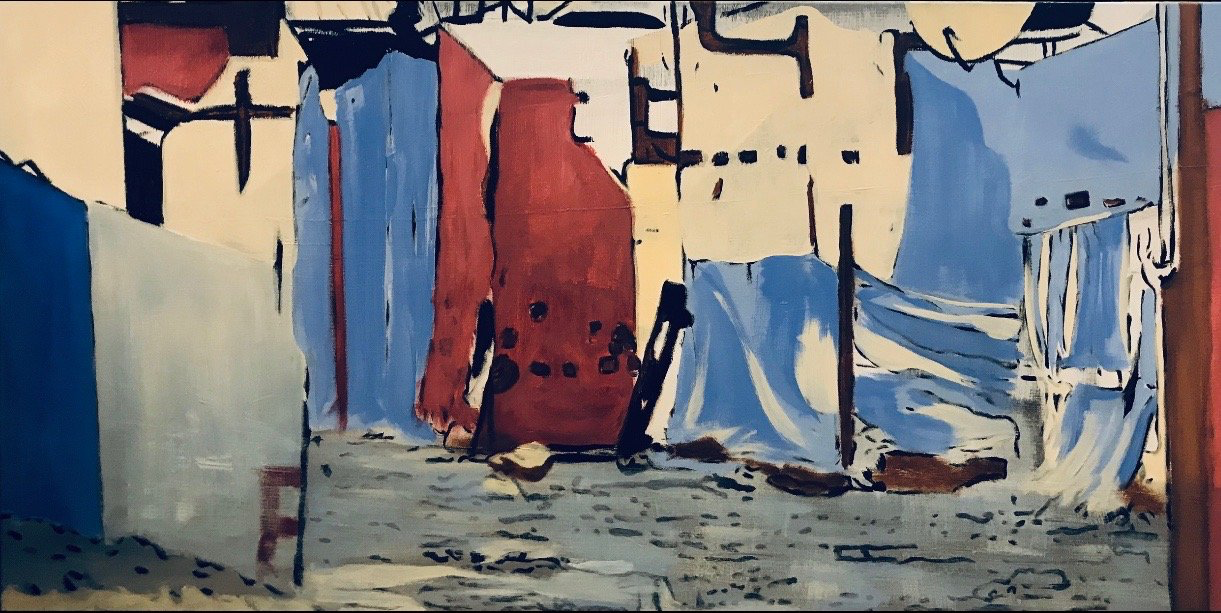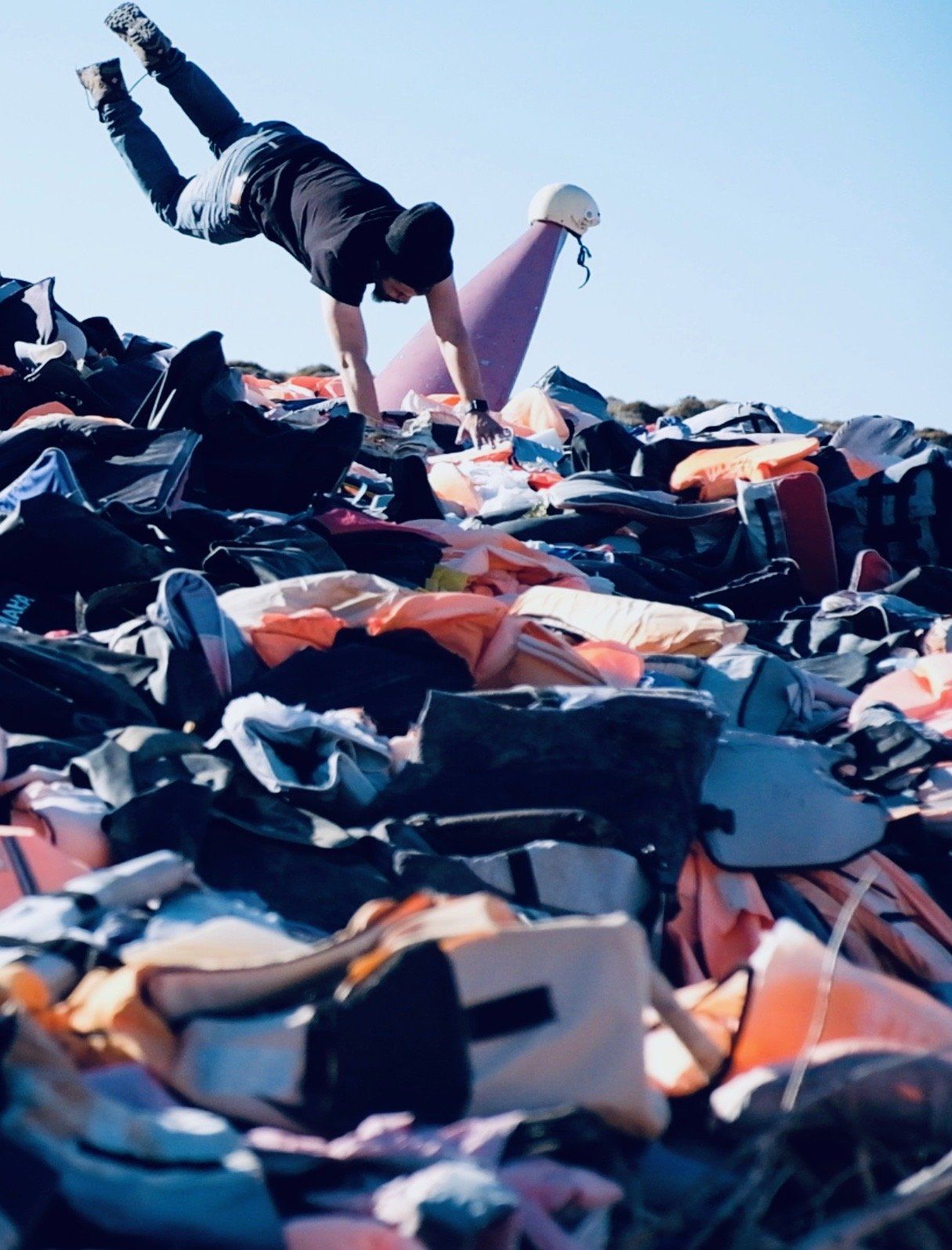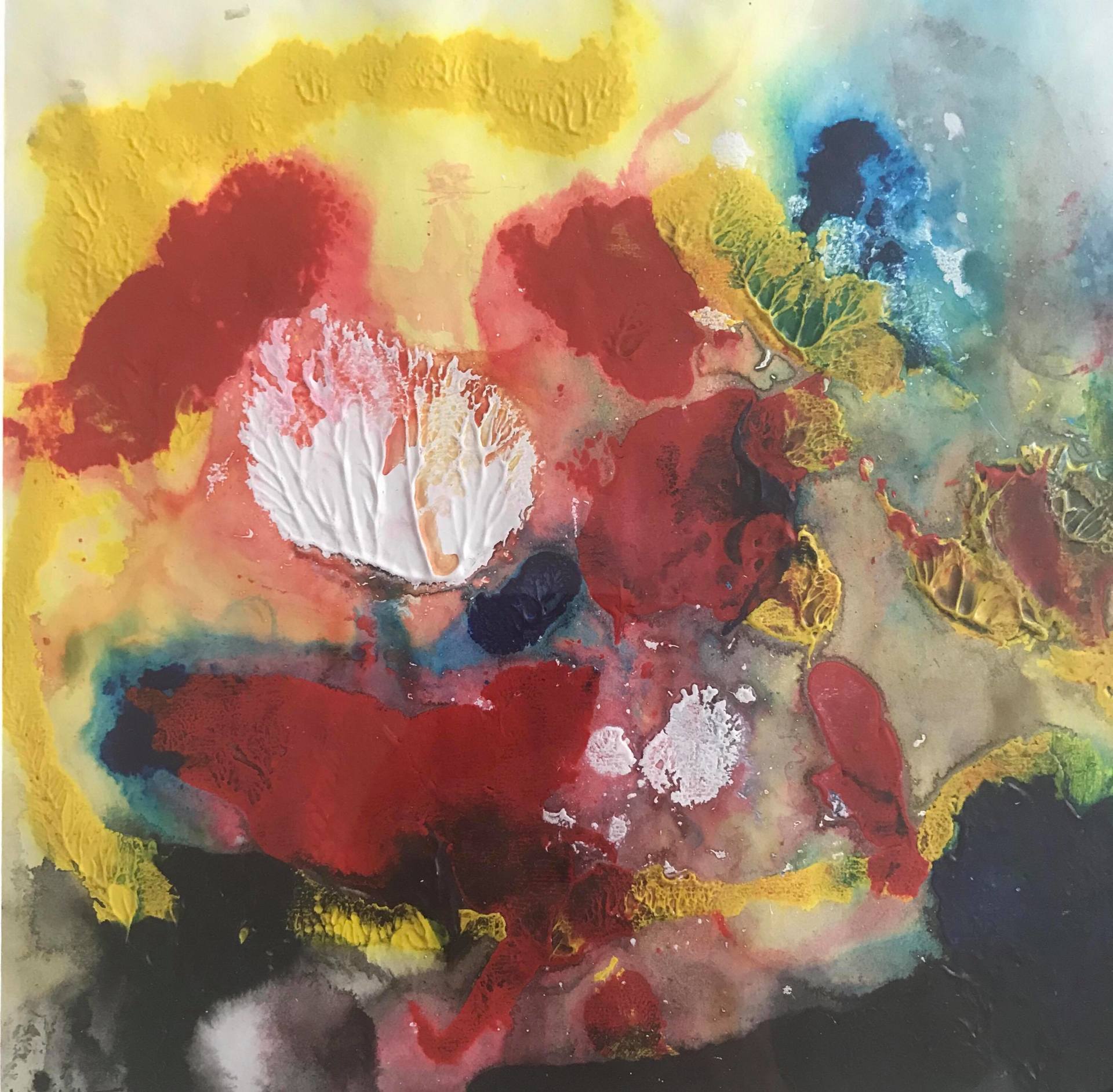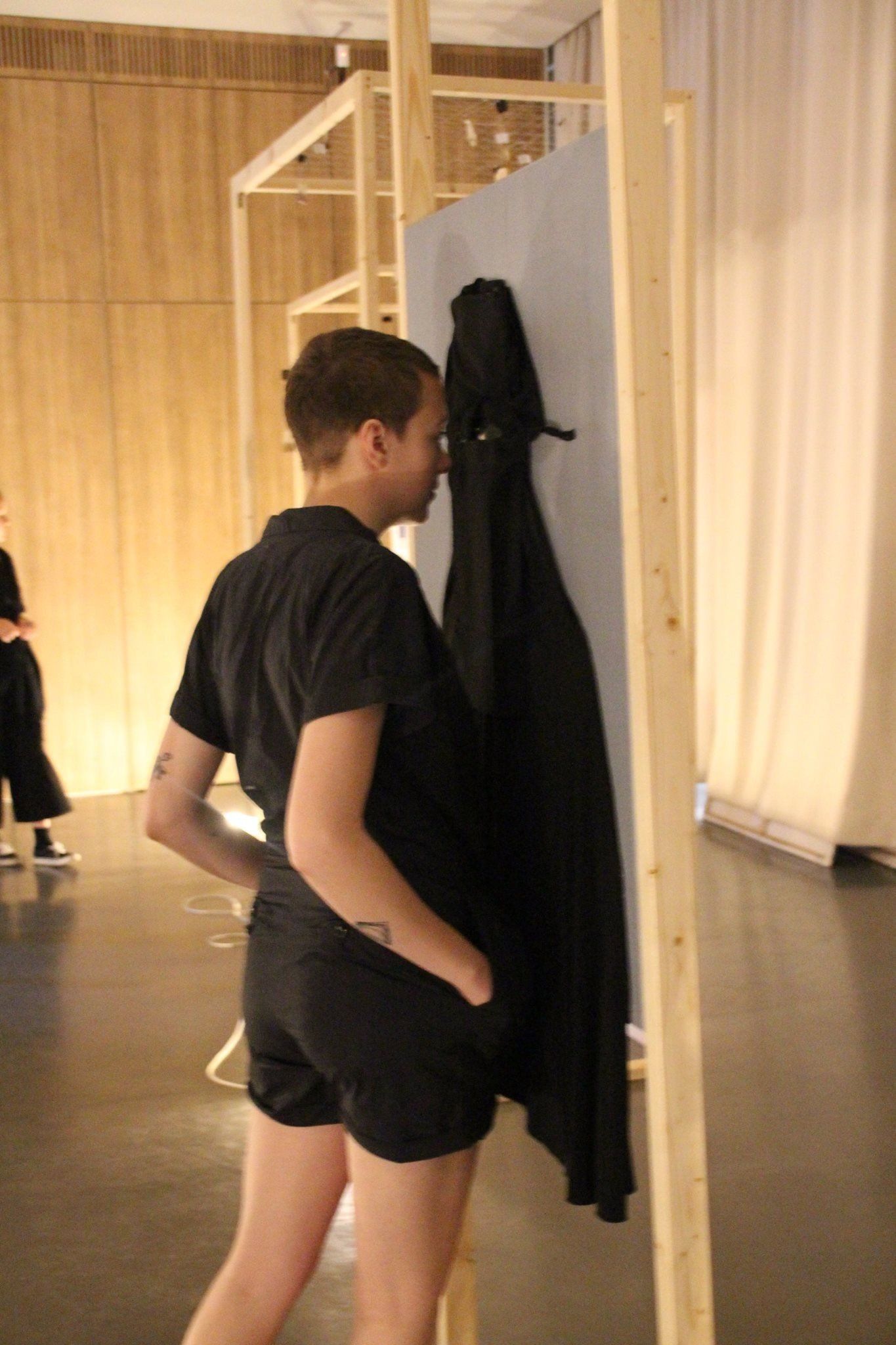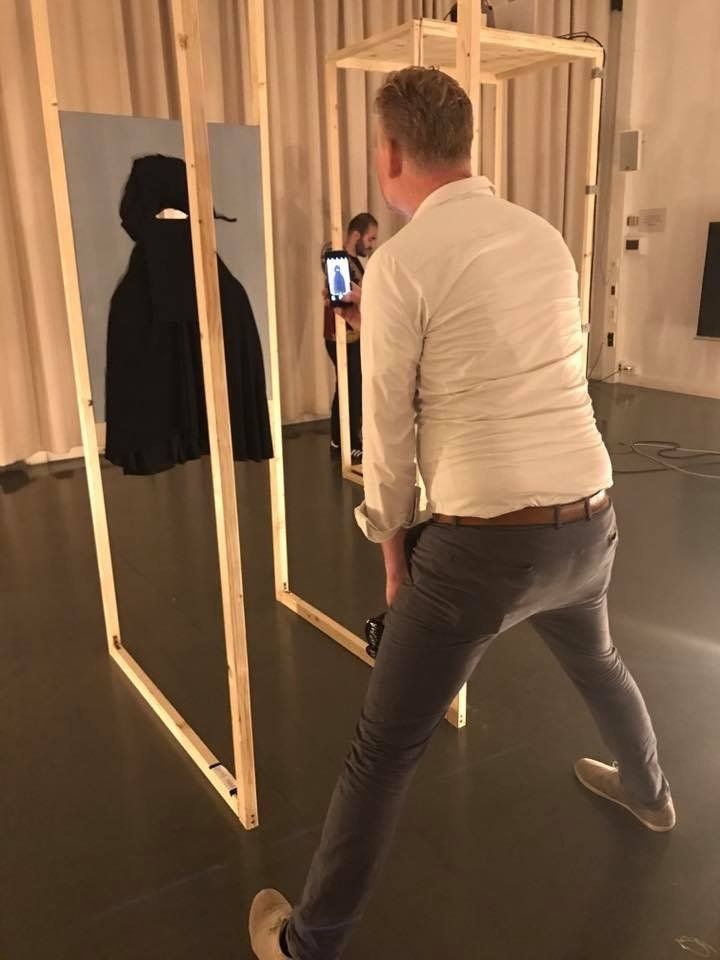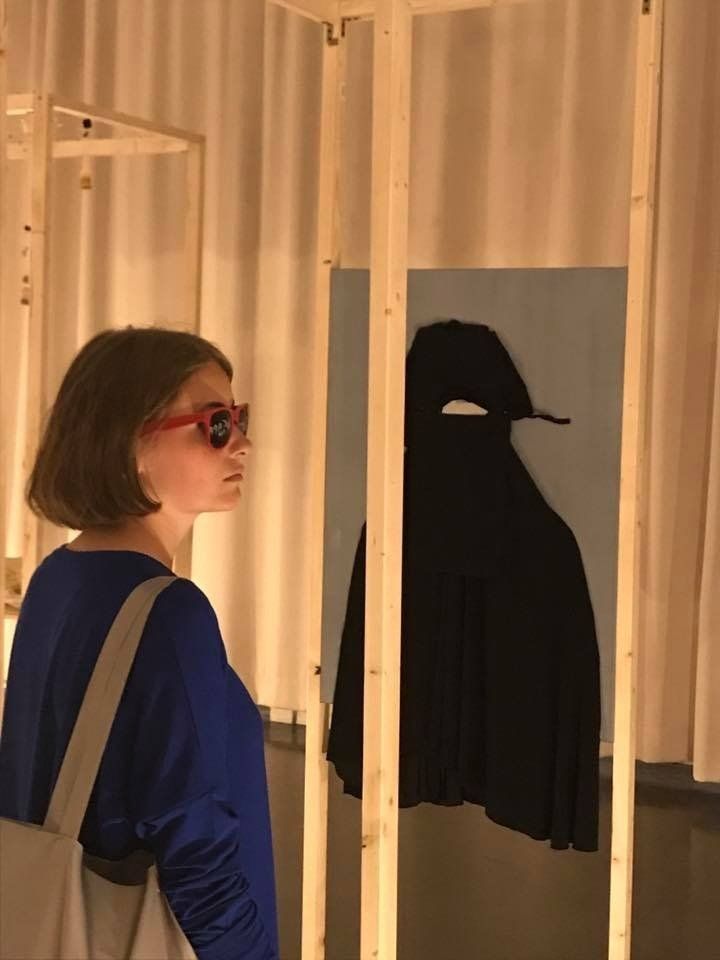Civil Defense Idlib,
والعربية بالاسفل: الخوذة البيضاء في إدلب محور عملي في معرض جامعة الفنون المعاصرة برلين
UdK- Rundgang Udk Berlin 2019 Präsentation der Arbeit auf Deutsch und auf Englisch والعربية بالاسفل:
Im Moment sind sie in der syrischen Provinz Idlib aktiv: Weißhelme retten dort die Menschen aus den Ruinen der Häuser, die von Bomben zerstört wurden.Der aus Idlib stammende Künstler Kamal Sallat will sie uns nahe bringen, er möchte, dass wir unter ihnen fühlen, mit ihnen retten. 2:19 Minuten können wir den Weißhelmen zuhören bei dem, was sie tun, vielleicht gerade im Moment. In dem Audiotrack, den er hier auf dem UdK-Rundgang 2019 präsentiert, hören wir zu, wie sie Schutt beiseite räumen, miteinander sprechen, aber auch mit den Eingeschütteten reden, um sie zu orten und um ihnen Mut zu machen. Wenn wir nur hören, nichts sehen, dann geht es uns wie den Weißhelmen selbst oft, wenn sie sich unter der Erde durch Staub zu den Menschen vortasten, die den Angriff überlebt haben. Das hörbare Denkmal, das Kamal Sallat den Weißhelmen setzt, ist ergänzt durch ein Plakat, das den Zeitdruck, dem sie ausgesetzt sind durch zwei Linien visualisiert: Die Herztöne und die Zeit, die zur Rettung zur Verfügung steht.
At the Moment they are active at the Syrian province of Idlib: The White Helmets that save people from the houses that have been torn down by bombs.The Syrian artist Kamal Sallat, born in Idlib, brings their activities to our attentionm, he wants us to feel to be with them, to save lifes together with them. In the audio track that he presents here at UdK-Rundgang 2019, we can hear how they work, how they remove rocks, talk to each other and those who are buried under those rocks, to locate them and also to bolster them. While we only hear and not see what they are doing, we are in the same situation as the White Helmets are themselves in many cases, when they are below ground trying to find survivors in the dust. The audible monument to the White Helmets that he created is complemented by a poster that visualizes the pressure of time that they are exposed to in their work through two lines: One that shows the heart sound and one that shows the lapse of time.
إدلب السورية: الخوذات البيضاء تنقذ الناس من أنقاض المنازل التي دمرتها قنابل نظام الأسد ، يريد الفنان كمال سلات ، المولود في إدلب ، أن يعرفنا بهم ، ويريدنا أن نشعر بأننا بينهم في أشد اللحظات القاسية ، عن طريق تسجيل صوتي . 2:19 دقيقة يمكننا الاستماع إلى الخوذ البيض في ما يفعلونه ، ربما الآن. في المسار الصوتي الذي يقدمه هنا في جامعة الفنون المعاصرة في برلين UdK 2019 ، نستمع إليهم وهم يتخلصون من الحطام ، ويتحدثون إلى بعضهم البعض ، وكأننا بينهم وهم يتحدثون إلى الأشخاص الذين دفنوا لتحديد مكانهم وتشجيعهم. ، هم احيانا لا يروا الضحايا التي ينقذونها ، مثلنا تماما لا نرى شيئا ، غالباً ما يشعرون كما لو أنهم يتحركون تحت الأرض عبر الغبار إلى الأشخاص الذين نجوا من الهجوم. يُستكمل العمل ملصق يوضح ضغط الوقت الذي يتعرضون له من خلال خطوط بيانية على صورة لإحدى أعماله الفنية: أصوات القلب والوقت المتاح للخلاص.
A JOURNEY OF BELONGING – PART II .
Bikini Berlin, 1.OG
Temporäre Ateliers: 6. März - 7. April 2019
Ausstellung; 12. - 27. April 2019
A JOURNEY OF BELONGING – PART II
"A Journey of Belonging - Part II" zeigt Arbeiten, die sich dem Thema der Zugehörigkeit auf politischer, emotionaler, ästhetischer, gesellschaftlicher oder territorialer Ebene widmen.
Ich sehe was, was du nicht siehst! Eine künstlerische Reaktion und subjektive Narration zum Werk von Max Pechstein „Fischerboot“, 1913, im Brücke-Museum Berlin, Künstler: Kamal Sallat . 2018 - 2019
Filmprojekt im Projekt „Ich sehe was, was Du nicht siehst“ im Rahmen des Fellowships „Weltoffenes Berlin“
Und in Kooperation mit dem Brücke-Museum. 2018 - 2019
Syrian Aesthetical Scream
Syrian Aesthetical Scream" in Konsthallen Sandviken / Sweden 14 april - 13 maj 2018
First of all, let us agree that the role of art during
wars and huge tragedies is of a great signicance
especially at the critical moments during which people need moral support and consolation, and need to retrieve stability and then reconstruct concepts with a new sensitivity and a pure vision.Therefore, this exhibition
Syrian Aesthetical Scream
is the second exhibition after
Paintings from the Orient
in the Kingdom of Sweden 2010, and it is considered as a timeframe for a special era, and a distinguishing feature in the history of the crisis and Syrian Art evenly. Syria witnessed huge events that gave rise to signi-
cant suering. Nobody can forget the destructions
and tragedies extended to both place and man, and which got stuck to mind, consequently in front of this crisis plastic art revived and expanded, and its expressive mode had augmented, even it became more adapting of the distressful reality; moreover it went beyond as a jump in darkness. As a result, a group of Syrian artists possessing modes with more savagery, and stronger techniques emerged. But expressing the condition and its results remain the denominator among all artists. The exhibition
Syrian Aesthetical Scream
summarizes the expression of all that is desired to view. It also indicates the deeply open trauma. It is just a stroke that involves the artist’s hope in aesthetical civilization in which man lives without pain or exile. This exhibition contains group of Syrian artists of the various religious and intellectual trends and sects. They are of various artistic schools, but they are united in their belief in Art and its aesthetical mission. These Syrian artists live in various countries of the world map, but they selected the Kingdom of Sweden, which is vivid and full of humanity, to be the domicile of their plastic arts works, where Sweden would be the place from which their aesthetical Scream would begin. There is no doubt that this aesthetical Scream has denotations
in this specic place (Kingdom of Sweden).
Psychologist Alain de Botton believes that: ”Art provides us with consolation, especially when we have a man that sympathizes with us”, especially in the conditions of wars and disasters. It is quite established that the artists and the persons supervi-
sing this artistic project (Exhibition) realize the es
-sence of these denotations. The unique thing agreed on by all in the world of art is that the art is the most important factor in man aesthetical and civilized education, as Stendhal says: ”Beauty is a promise of happiness” .Finally, I send my best wishes and thanks to Fahed Mustafa and Daniel Palmberg and all those who cooperated and organized for this exhibition in the lovely town Sandviken.
Ahed Alnaser Rajjoub.
SAME SAME BUT DIFFERENT.
Rundgang Udk Berlin 2017.
Die Burka auf dem nebligen Bild.
Die Idee dreht sich um die Interaktion des europäischen Volkes direkt mit der Burka.
